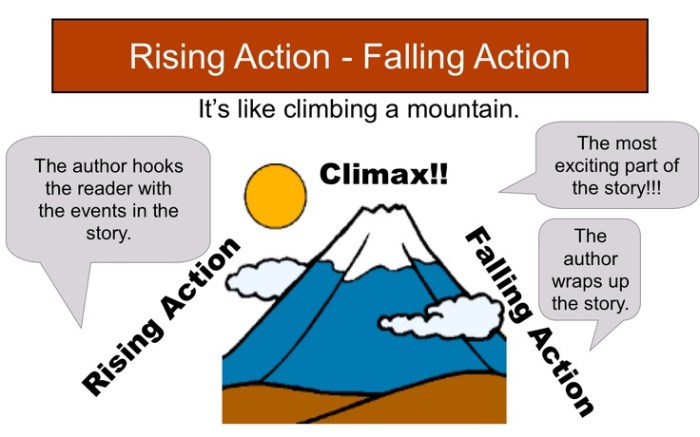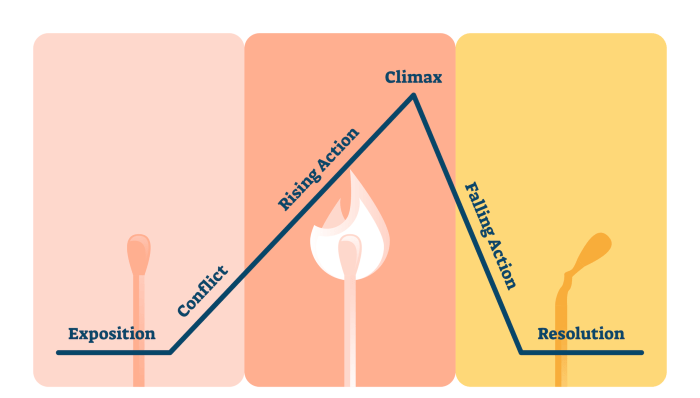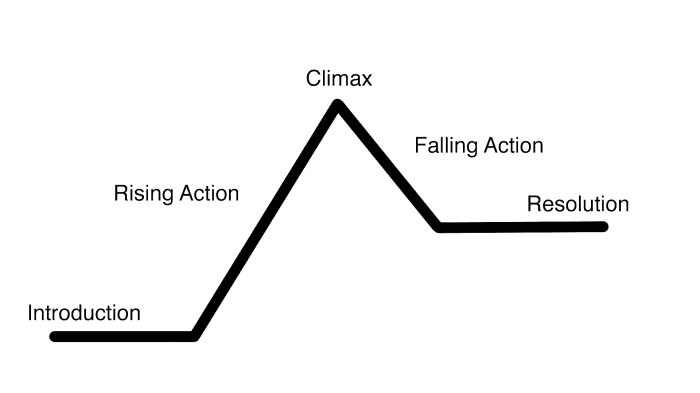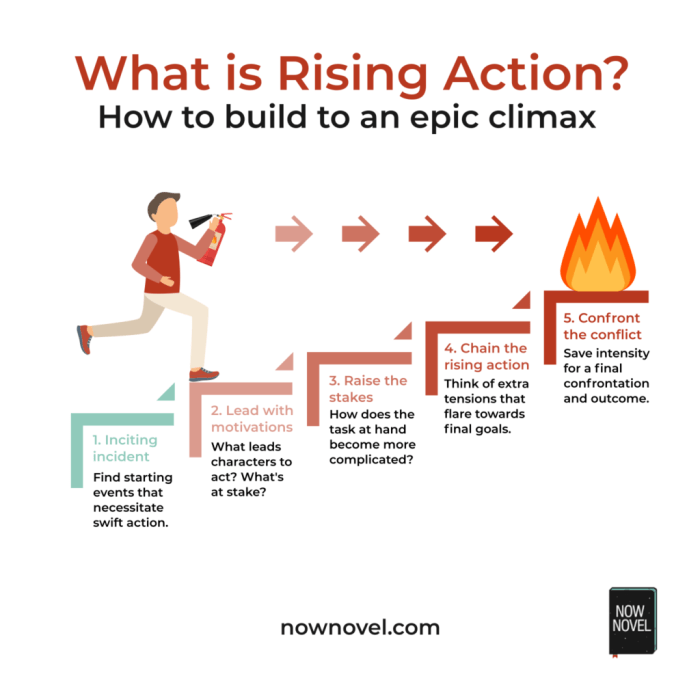The rising action contributes to this implied resolution by showing the audience important information. It provides clues or hints about the implied resolution. The rising action also foreshadows the resolution. Specific examples from the text where the rising action foreshadows the resolution are important to discuss.
Additionally, the cause-and-effect relationship between the rising action and the implied resolution needs to be analyzed. This includes identifying how the events in the rising action lead to or influence the resolution. A detailed explanation of the chain of events is also needed.
The rising action also contributes to the development of the characters. The characters’ actions and decisions in the rising action shape the implied resolution. Examples of character growth or change that foreshadow the resolution are important to provide.
Rising Action as Evidence of Resolution

The rising action in a story provides clues or hints about the implied resolution. It foreshadows events and developments that will ultimately lead to the story’s conclusion.
Specific Examples from the Text
- In “The Great Gatsby,” the rising action includes Gatsby’s lavish parties and his pursuit of Daisy. These events foreshadow the tragic resolution, as they highlight Gatsby’s obsession and the impossibility of his dream.
- In “Hamlet,” the rising action involves Hamlet’s indecision and his encounters with the ghost of his father. These events foreshadow Hamlet’s eventual downfall and the play’s tragic resolution.
Cause and Effect Relationship

The rising action and the implied resolution have a cause-and-effect relationship. The events in the rising action lead to or influence the resolution.
Chain of Events
- In “The Catcher in the Rye,” Holden Caulfield’s alienation and rebellion lead to his expulsion from school and his eventual breakdown.
- In “The Crucible,” the accusations of witchcraft lead to a series of trials and executions, culminating in the play’s tragic resolution.
Character Development and Resolution
The rising action contributes to the development of the characters. Their actions and decisions in the rising action shape the implied resolution.
Character Growth or Change, The rising action contributes to this implied resolution by showing
- In “The Lord of the Rings,” Frodo Baggins’ journey to Mount Doom transforms him from a timid hobbit into a courageous hero.
- In “The Odyssey,” Odysseus’s experiences and trials shape his character and prepare him for his eventual return to Ithaca.
Setting and Atmosphere: The Rising Action Contributes To This Implied Resolution By Showing

The setting and atmosphere in the rising action create a sense of anticipation or inevitability. They hint at the implied resolution.
Use of Symbolism and Imagery
- In “Wuthering Heights,” the desolate moors symbolize the emotional turmoil and isolation of the characters.
- In “1984,” the oppressive atmosphere foreshadows the dystopian resolution and the loss of individual freedom.
Foreshadowing and Symbolism

Foreshadowing and symbolism in the rising action suggest the implied resolution. They create a sense of suspense or expectation.
Literary Devices
- In “Macbeth,” the witches’ prophecies foreshadow Macbeth’s rise and fall.
- In “The Scarlet Letter,” the letter “A” symbolizes Hester Prynne’s sin and her struggle for redemption.
Top FAQs
What is the rising action?
The rising action is the part of the story that introduces the conflict and develops the plot.
How does the rising action contribute to the implied resolution?
The rising action provides clues or hints about the implied resolution. It also foreshadows the resolution and establishes a sense of anticipation or inevitability.
What are some examples of foreshadowing in the rising action?
Examples of foreshadowing in the rising action include the use of symbols, imagery, and specific details that hint at the events that will occur later in the story.